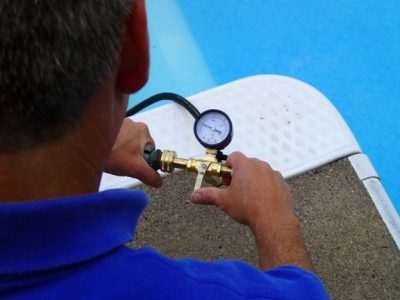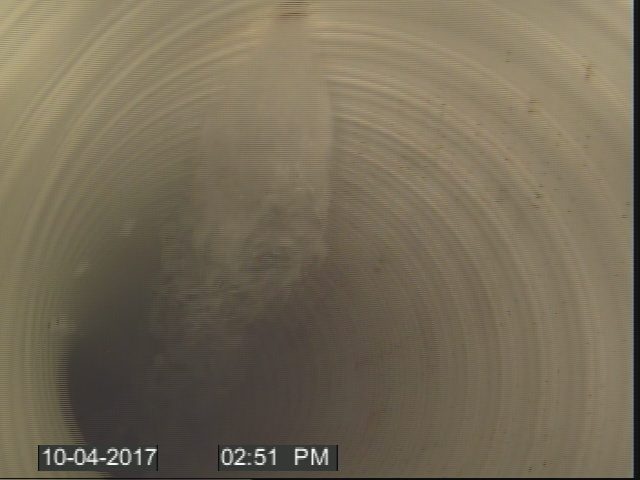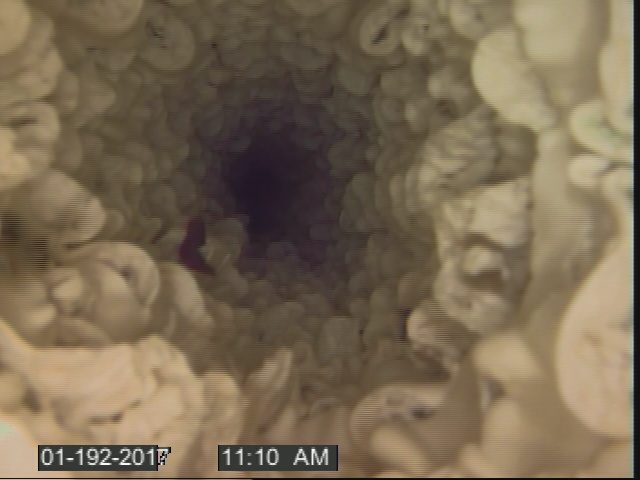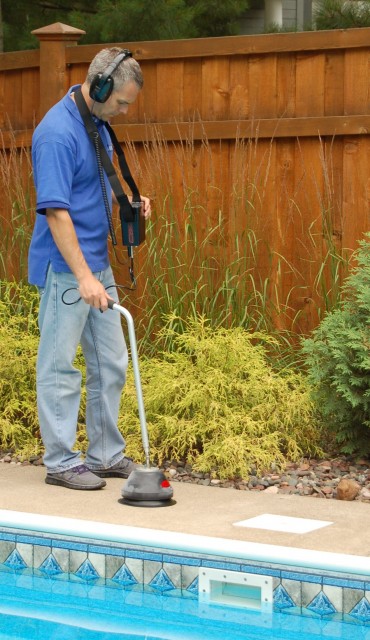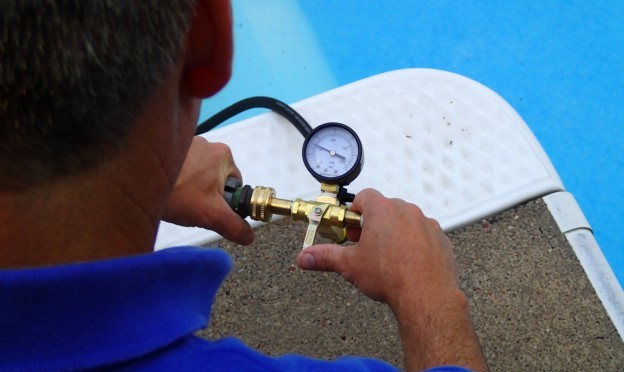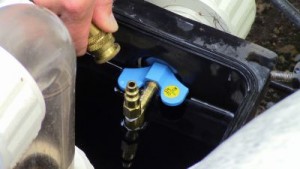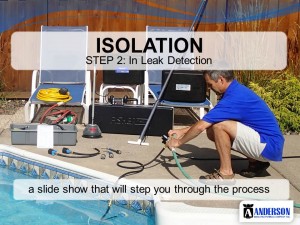What happens underground in the winterizing process? By setting up a clear PVC pipe system we can visualize the process and some of the challenges to winterizing pipes. This demonstration shows us that effectively utilizing the proper equipment and technique for blowing out plumbing lines is crucial for consistent, successful winterization. It is important to understand the three main phases of the process:
-
- Water purge phase
- Line clear phase
- Sealing/securing phase
In the water purge phase, the water that fills the lines is “pushed” out of the pipe and replaced with air. Several factors are important to accomplish this part of the process effectively. First of all, the air source you use must provide enough air pressure to counter the back pressure of the water in the pool. When blowing out return lines this is a pretty low threshold, however when purging water from the main drain line a minimum of 4 psi of pressure must be achieved to push against the 8 feet of water in many deep ends. The second important factor during the purge phase is the amount of water flow that can be pushed through your blow-out plugs. The wider these plugs open under the appropriate pressure the more water you will be able to clear from the line at a fast rate.
The line clearing phase happens after most of the water has been purged from the lines but may still remain in low parts of the plumbing. Your ability to generate a high air flow rate through the purged lines is the critical factor in successfully blowing this remaining water from these locations. Choose an air source that delivers at least 100 cubic feet per minute (cfm) of air flow – most compressors only produce 2-5 cfm so you will need a blower. And again, use blow-out plugs that open wide at low back pressure to assure that the blower’s power can be realized as flow through the pipes. On return lines with more than one return branching off the main line, strong air flow to the farthest branch can be achieved by blocking the flow of cleared branches earlier in the run.
Once the lines have been cleared of water they must remain so over the course of the winter, so the plugs must effectively seal to prevent water from re-entering the plumbing from the pool. It’s still a good idea to pour antifreeze into the cleared lines just in case undiscovered cracked fittings, damaged threads, or badly installed plugs allow some water back in. After pouring antifreeze into the cleared line, turn the blower back on just long enough to see it blown into the pool through your blow-out plugs. The remaining anti-freeze will settle into low spots in the plumbing . . . just the spots that would be prone to problems if water got in.
Anderson’s Big Blue Blower and Winter Duck Plugs deliver the performance you need to assure each phase of the blow-out process is done effectively. The blower produces enough pressure “umph” to blow-out even the deepest main drain and provides an exceptional amount of air flow to clear all low spots in plumbing. Winter Duck Plugs open wide at low back pressures to clear lines quickly during the water purge phase and enable high air flow during the line clearing phase. Additionally, they can be easily blocked during this clearing phase with simple office binder clips to facilitate flow to all branches of the return system. Most importantly, over the past 10+ years, Winter Duck Plugs have proven themselves dependable at keeping water out of lines and protecting thousands of pools from winter freeze damage.
For a comparison of how Winter Duck Plugs compare to other blow-out plugs on the market see the results of our testing here.

